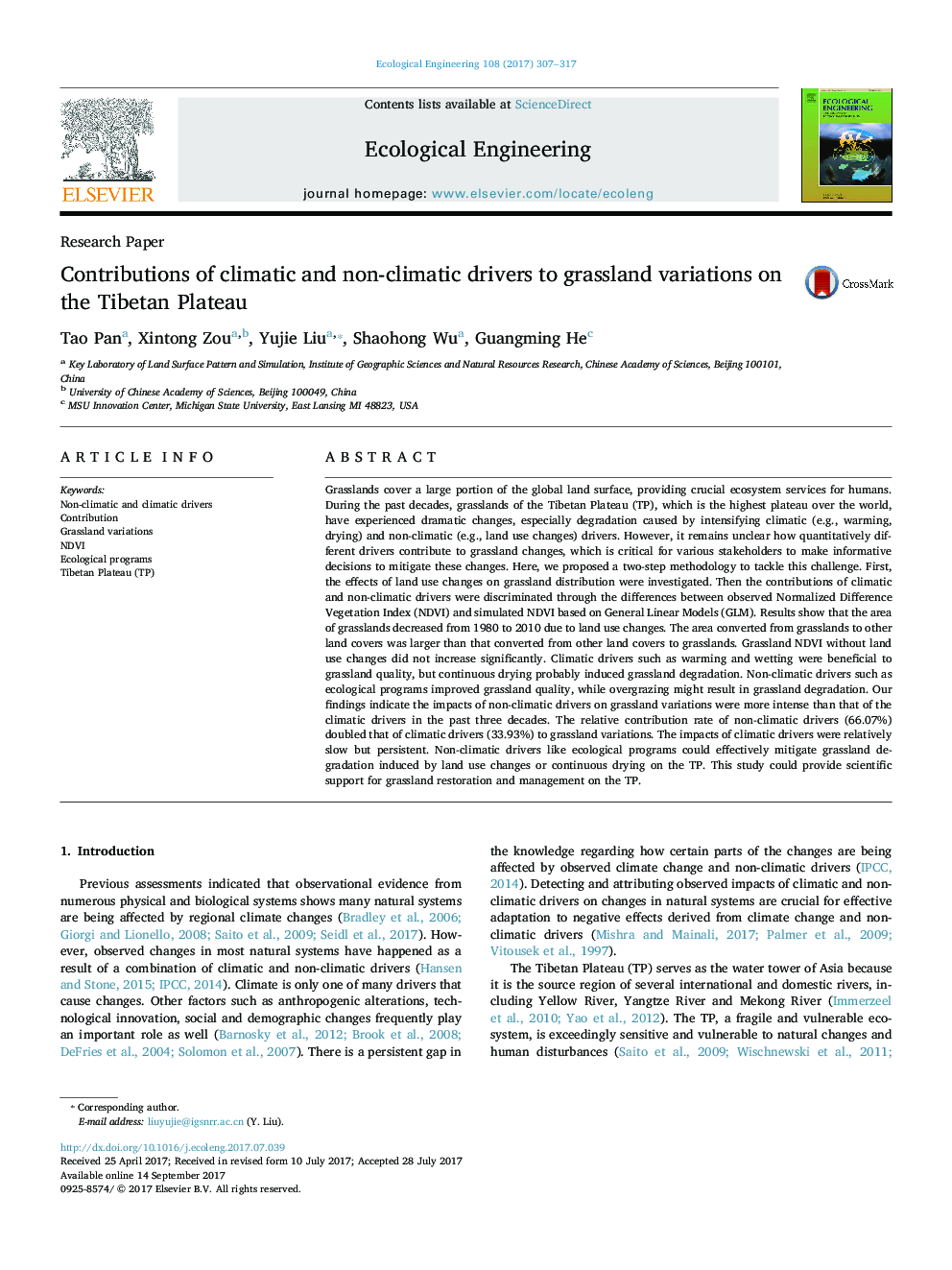| کد مقاله | کد نشریه | سال انتشار | مقاله انگلیسی | نسخه تمام متن |
|---|---|---|---|---|
| 5743545 | 1412314 | 2017 | 11 صفحه PDF | دانلود رایگان |
Grasslands cover a large portion of the global land surface, providing crucial ecosystem services for humans. During the past decades, grasslands of the Tibetan Plateau (TP), which is the highest plateau over the world, have experienced dramatic changes, especially degradation caused by intensifying climatic (e.g., warming, drying) and non-climatic (e.g., land use changes) drivers. However, it remains unclear how quantitatively different drivers contribute to grassland changes, which is critical for various stakeholders to make informative decisions to mitigate these changes. Here, we proposed a two-step methodology to tackle this challenge. First, the effects of land use changes on grassland distribution were investigated. Then the contributions of climatic and non-climatic drivers were discriminated through the differences between observed Normalized Difference Vegetation Index (NDVI) and simulated NDVI based on General Linear Models (GLM). Results show that the area of grasslands decreased from 1980 to 2010 due to land use changes. The area converted from grasslands to other land covers was larger than that converted from other land covers to grasslands. Grassland NDVI without land use changes did not increase significantly. Climatic drivers such as warming and wetting were beneficial to grassland quality, but continuous drying probably induced grassland degradation. Non-climatic drivers such as ecological programs improved grassland quality, while overgrazing might result in grassland degradation. Our findings indicate the impacts of non-climatic drivers on grassland variations were more intense than that of the climatic drivers in the past three decades. The relative contribution rate of non-climatic drivers (66.07%) doubled that of climatic drivers (33.93%) to grassland variations. The impacts of climatic drivers were relatively slow but persistent. Non-climatic drivers like ecological programs could effectively mitigate grassland degradation induced by land use changes or continuous drying on the TP. This study could provide scientific support for grassland restoration and management on the TP.
Journal: Ecological Engineering - Volume 108, Part A, November 2017, Pages 307-317
